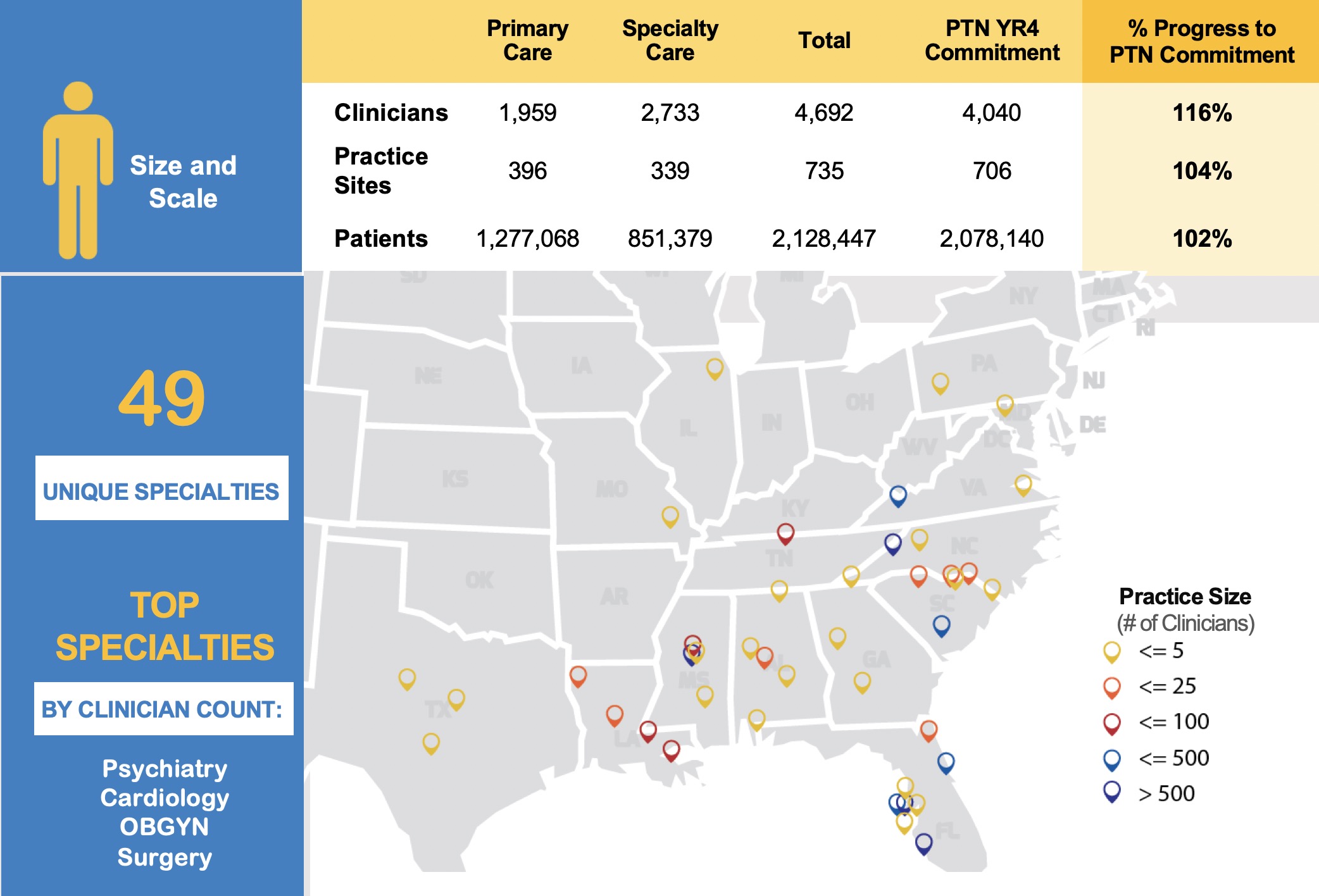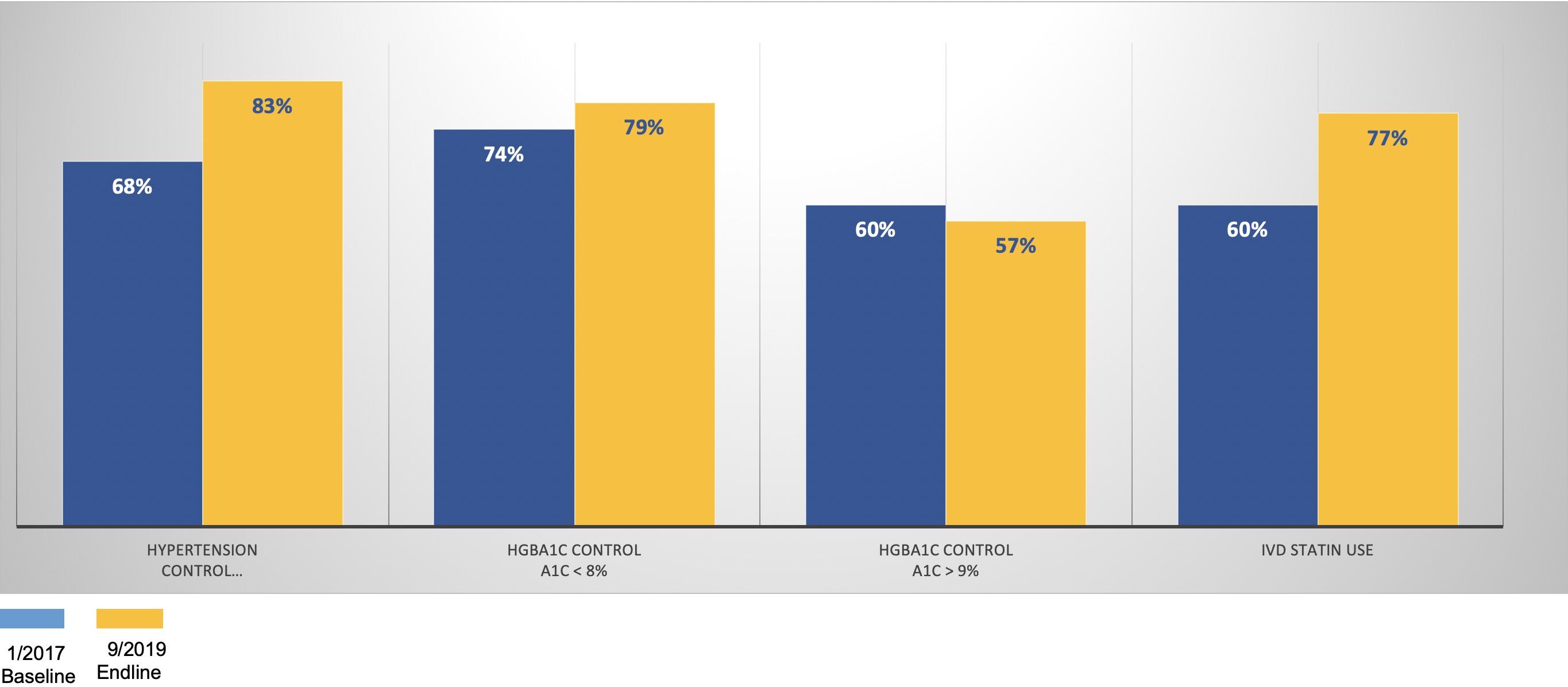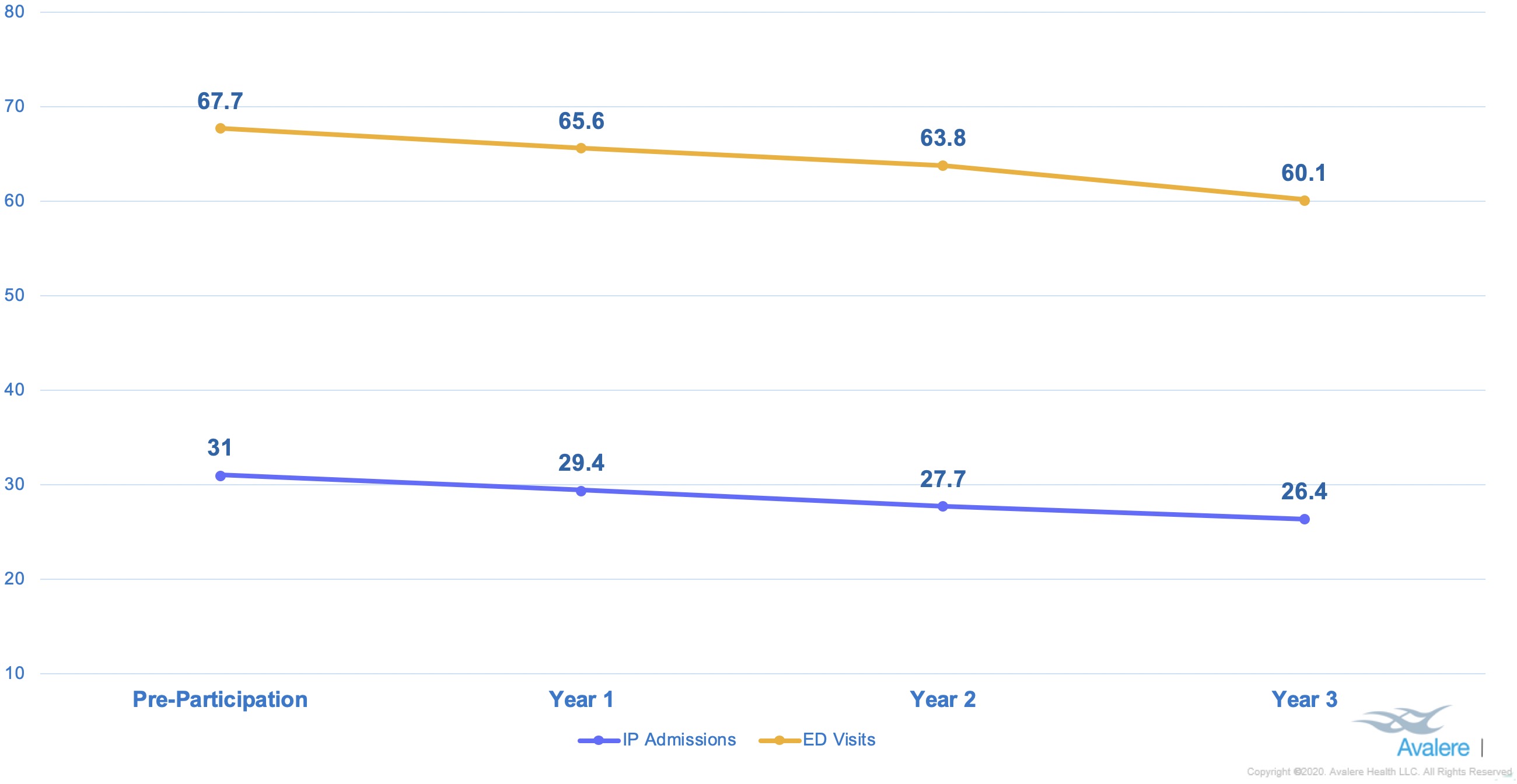COSEHQ was one of 29 nationally-based health care collaborative practice transformation networks (PTN) selected to participate in the Transforming Clinical Practice Initiative. QualityImpact, the coined name of COSEHQ’s PTN, provided technical assistance and hands-on consultation to clinicians that transformed care and led to improved quality, increased patients’ access to information, and reduced healthcare costs.
The Transforming Clinical Practice Initiative (TCPI) was a four-year technical assistance program designed to help clinicians expand their quality improvement capacity, engage in greater peer-to-peer learning, and utilize health data to determine gaps and target intervention needs. The cooperative agreement with CMS allowed COSEHQ to expand its reach across the Southeast and engage 4,692 clinicians located in 735 practice sites, (Figure 1) and prepare clinicians to be successful under new value-based payment models being advanced by both federal and private payers. Utilizing technical support, consultation with subject matter experts, data transparency and frequent progress reporting on performance towards clinical and utilization targeted measures, population health improvement was achieved and utilization rates and their associated healthcare costs were reduced. The COSEHQ PTN was a catalyst for change in achieving the TCPI primary goals. All 735 participating practices showed signs of improved clinical performance. Of these practices, 456 were recognized by CMS as exemplary practice sites, serving as a testament to the high-caliber care provided by these organizations. Additionally, 79% (583 of our enrolled practice sites) successfully transitioned to value-based payment models, one of many goals of the CMS TCPI.
The COSEHQ Practice Transformation Network (PTN) Enrolled Over 4,600 Clinicians and 700 Practice Sites

COSEHQ exceeded it original projected clinician enrollment goal by 16%, enrolled practices by 4% and a patient reach by 2%. Enrolled practices varied by size from independent, less than 5 clinicians to large integrated networks.
Improved Cardiovascular Clinical Measures in Patients

Actual compared to COSEHQ’s PTN projected number of patients showing improvement in one or more of three cardiovascular clinical measures: Blood Pressure, A1c <8% in patients with Diabetes, and Statin Use in Patients with diagnosed Intravascular Disease. Clinical data reporting started 9/2017.
Improvements in Clinical Metrics Control Rates

Of the 524,221 Hypertension diagnosed patients, 446,386 achieved control rates at the end of TCPI (endline) compared to 360,607 at baseline. Of 71,071 diagnosed Diabetes patients, 57,798 patients achieved A1c< 8% levels at endline compared to 46907 patients at baseline. 6,871 diagnosed Diabetes patients had A1c>9% (poor control) at baseline, compared to 6562 patients who had improved control at endline (note: this measure was only tracked from 5/2018-9/2019- resulting in the lower number of patients. Of 92,966 patients diagnosed with Ischemic Vascular Disease, 55,780 were on a statin at baseline, and this increased to 65,076 patients at endline.
Inpatient Admissions and Emergency Department Visits Per 100 Medicare FFS Beneficiaries: Pre-Participation vs. QualityImpact Participation Years

Avalere analysis based on 100% sample of fee-for-service (FFS) Medicare patient data from participating practices. Pre-Participation: 2015; Quality Impact Years 1-3: 2016-2018.
Category
Federal Contract
Contract Vehicle
Department of Health and Human Services; Centers for Medicare & Medicaid Services. Contract Number: 1L1CMS331443-01-00. The contents of this report are the sole responsibility of the Consortium for Southeastern Hypertension Control and do not represent the official views of HHS or any of its agencies. The results presented in this report were self-reported by clinicians and practices and have not been validated and verified by HHS or any of its agencies.